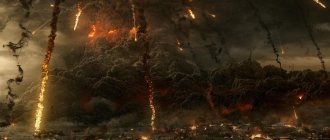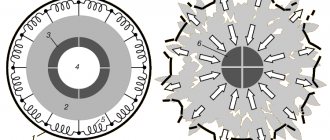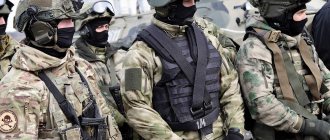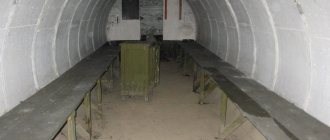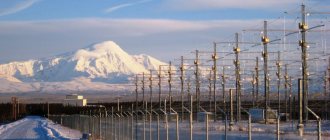The scientific and technological revolution, which began in the middle of the 19th century, radically changed the face of human civilization. Scientific achievements and new technologies have touched almost all areas of human life, significantly improving the quality of life. In a short period of time, a man managed to tame electricity. Physics, chemistry and medicine have reached a completely different, qualitatively new level of applied science, providing humanity with new opportunities to receive civilizational benefits. However, it would be surprising if scientific and technological progress did not affect the military sphere.
In the 20th century, new, more sophisticated types of weapons of mass destruction entered the arena, putting human civilization on the brink of disaster.
Characteristics of weapons of mass destruction
The main criterion for any new type of weapon has always been a greater destructive effect. In modern conditions, it becomes important not only to quickly defeat the enemy through fire confrontation. The first place comes to the damaging factor, the size and scale of which make it possible to disable a large concentration of manpower of a potential enemy within a short period of time.
Such a result can only be achieved using a completely new weapon, which would differ not only in the method of delivery and use on the battlefield, but would also meet the following characteristics:
- high lethality;
- large affected area;
- speed of action;
- the presence of any negative impact on people, animals and the environment;
- presence of negative consequences.
Each new weapon of mass destruction becomes more powerful and lethal to humans. Along with the increase in the destructive power of such weapons, the affected area has increased significantly and long-term damaging factors have intensified. These factors are the main features of weapons of mass destruction that we still deal with today.
The first classical weapon of mass destruction that humanity encountered was chemical or biological weapons. Even in ancient times, when besieging fortresses or defending against enemy invasion, animal excrement and decomposition products of living organisms were used to worsen the sanitary situation in the enemy camp. Following the use of such means of struggle, a sharp decline in morale was observed. Often the combat effectiveness of the troops fell to extremely low levels, making it easier to achieve military success of the campaign. The heavy foul odor and sources of drinking water contaminated with decaying flesh became precisely those damaging factors that massively affected large crowds of people. The history of wars knows many such examples when, instead of armed struggle, the outcome of battles was decided through the use of other means.
Many years later, in modern times, science gave man a more effective method of armed struggle on the battlefield. Thanks to the use of chemically active toxic substances, the military was able to achieve the desired success on the battlefield.
The starting point was the chemical attack of German troops in the area of the Ypres River, which took place on April 22, 1915. Chlorine, which the Germans released from cylinders, was used as a toxic substance. Up to 5 thousand soldiers and officers of the French army died within an hour from the suffocating effect of the gas. Up to 10 thousand people were put out of action, having received poisoning of varying degrees of severity. In a short time, the enemy lost an entire division and a section of the front 15 km long. turned out to be practically broken through. From that moment on, all warring parties began to use chemical weapons, radically changing combat tactics. Instead of chlorine, phosgene and hydrocyanic acid were used, highly toxic substances that increased the destructive power of the new weapon. Despite personal protective equipment (PPE), at least one million people died from chemical weapons during the First World War. The actions of weapons of mass destruction showed the whole world how close man has come to the line beyond which the total destruction of his own kind begins.
Hello student
1. Characteristics of chemical weapons and the source of chemical destruction Chemical weapons are toxic substances and means of their combat use.
Toxic substances (CS) are highly toxic toxic chemical compounds that are used to harm people, animals, plants, environmental objects (air, water, soil), food supplies, fodder, etc.
Based on the nature of their effects on the body, toxic substances are classified into the following groups:
• nerve agent action (sarin, soman, wx gases and
etc.);
• skin-resorptive action (mustard gas),
• asphyxiating effect (phosgene, diphosgene, etc.),
• generally toxic (hydrocyanic acid, cyanogen chloride, etc.),
• irritating action (chloroacetophenone, adamsite),
• psychotomimetic agents (“BZ” and LSD).
According to their tactical purpose, toxic substances are divided into 3 groups:
1) fatal,
2) annoying,
3) temporarily incapacitating.
Lethal ones are designed to destroy enemy personnel. This group includes the following toxic substances:
• nerve paralytic action;
• skin-resorptive effect;
• suffocating effect;
• generally poisonous action.
Irritants are intended to weaken the combat effectiveness of troops, exhaust them, and also for use for police and training purposes. This group includes irritating toxic substances.
Temporarily incapacitating chemical agents are intended to disrupt troops. This group consists of psychotomimetic substances.
At the time of use, toxic substances can be in the form of:
• pair,
• fog,
• smoke,
• coarse aerosol,
• droplet-liquid state.
As a result of the use of chemical weapons, a chemical lesion center (CCP) arises - a territory in which environmental objects and the population have been contaminated with chemical warfare agents.
In this case, the size and nature of the focus of chemical damage depends on:
• on the type of toxic substances,
• on the method of using toxic substances,
• terrain,
• the nature of the development of settlements,
• meteorological conditions, etc.
According to various domestic and foreign sources, losses among the unprotected population can range from 80 to 90% when using various toxic substances.
When using different toxic substances, the structure of losses may be different. For example, if nerve agents are suddenly used, irreversible losses can reach 50%.
2. Characteristics of biological weapons and the source of biological damage
Biological weapons (BW) are ammunition and devices equipped with pathogenic microorganisms or their toxins intended to infect the population, environmental objects (air, water, soil), plants, animals, food supplies, fodder with the aim of causing damage to manpower and economic damage to the enemy.
At the same time, the combat properties of biological weapons include:
• silent operation;
• the ability to produce a significant effect in negligible quantities;
• duration of action (due to epidemic spread);
• ability to penetrate unsealed objects;
• reverse effect (possibility of hitting the party that used the weapon);
• strong psychological impact, the ability to cause panic and fear;
• low cost of production.
The main methods of using biological weapons are:
• aerosol (the most promising, allowing to infect large areas and all objects of the natural environment);
• spread of infected carriers of infectious diseases (ticks, insects, rodents) in the area;
• sabotage, that is, by contaminating drinking water and food products.
The following requirements apply to biological agents planned as means of attack:
• sustainability in the environment;
• high virulence (the ability to cause diseases in small quantities);
• the ability to cause diseases in both humans and animals;
• -highly contagious (the ability to penetrate the body in various ways and cause the corresponding forms of the disease);
• the ability to cause diseases that are difficult to treat.
In this case, biological means of attack are divided into the following groups:
1) means of infecting people - anthrax, plague, tularemia, smallpox, cholera, typhus, cholera, meliolphosis, hemorrhagic fevers, botulism, etc.;
2) means of infecting farm animals - anthrax, swine fever, cattle plague, equine encephalitis, glanders, brucellosis, foot-and-mouth disease, etc.;
3) means of damaging agricultural plants - grain rust, potato late blight, potato and beet tops curling virus, etc.
At the same time, the use of combined formulations, as well as the use of biological agents in combination with toxic substances or in areas contaminated with other toxic substances, cannot be ruled out.
As a result of the use of biological weapons, a focus of biological damage (FOD) arises, that is, an area in which, as a result of the use of biological agents, mass infection of people, animals and plants with infectious diseases occurred.
The size of the lesion depends on:
• type of microorganisms,
• method of application,
• meteorological conditions,
• terrain.
The boundaries of the source of biological damage are, as a rule, determined by the boundaries of populated areas.
To calculate sanitary losses, the following are most important:
• type of pathogen and its stability in the environment;
• area of infection;
• population size in the contaminated area,
• provision of the population with protective equipment,
• preparedness of the population to act in emergency situations (in particular, in the outbreak of
biological damage).
3. Characteristics of nuclear weapons and the source of nuclear damage
Nuclear weapons are the most powerful weapons of mass destruction, based on the use of intranuclear energy.
As a result of the use of nuclear weapons, a nuclear lesion site (NLC) arises - an area exposed to the damaging factors of a nuclear explosion.
The damaging factors of a nuclear explosion include:
• shock wave,
• light radiation,
• penetrating radiation,
• radioactive contamination of the area,
• electromagnetic pulse.
A shock wave is an area of compressed air that rapidly spreads in all directions from the epicenter of the explosion at enormous speed.
The main characteristic of this factor is the excess pressure in the shock wave front, that is, the amount by which this pressure exceeds atmospheric pressure (P0). Excess pressure is measured in kPa (kilopascals). The blast wave consumes up to 50% of the energy of a nuclear explosion.
Under the influence of a shock wave, buildings, structures, and transport routes are destroyed. Since the air temperature at the front of the shock wave can reach high values (at an excess pressure of 100 kPa - up to 350°C), fires can occur.
Unprotected people receive closed and open injuries. The cause of open damage is most often secondary factors of the shock wave - flying debris of buildings, structures, etc. The duration of the shock wave is about 15 seconds.
Light radiation is electromagnetic radiation in the ultraviolet, visible and infrared regions of the spectrum. It is a fireball with a temperature of 8-10 thousand degrees. Up to 30-35% of the energy of a nuclear explosion is spent on light radiation. Duration of action is about 12 seconds.
At the same time, light radiation causes massive fires (for unprotected people, burns of varying severity depending on the distance from the epicenter of the explosion).
Penetrating radiation is a stream of gamma rays and neutrons that have great penetrating power. Penetrating radiation accounts for about 10% of the explosion energy, the effect of this factor lasts about 15 seconds, and the distance at which penetrating radiation acts is about 1.5 km.
In this case, gamma rays and neutrons along their path cause ionization of the medium. In unprotected people, depending on the absorbed dose, radiation sickness of varying severity may occur.
Radioactive contamination of an area occurs as a result of the fallout of radioactive substances (RS) from the cloud of a nuclear explosion.
The degree of radioactive contamination of the area depends on the type of explosion, the power of the nuclear weapon, meteorological conditions (for example, the presence of wind), and the terrain.
The fallout of radioactive substances during a ground explosion occurs along the path of the cloud and forms an ellipsoidal radioactive trace on the ground, the width and length of which is determined by the power of the charge, the height of the explosion, and the wind speed.
The main characteristics of radioactive contamination of the area are:
• exposure dose rate,
• actual exposure dose.
An area is considered contaminated if the exposure dose rate reaches 0.5 r/h or higher.
Radioactive substances falling from the cloud contaminate clothing, exposed parts of the body of unprotected people and environmental objects (air, water, soil, plants, food, fodder, etc.).
By the way, when radioactive substances enter the body with air, water and food, they can cause internal radiation, which can aggravate the course of radiation sickness from external exposure.
An electromagnetic pulse is an electric and magnetic field resulting from the impact of ionizing radiation on the environment.
An electromagnetic pulse (EMP) damages equipment, communication lines, and radio-electronic devices. In this case, people experience secondary damage as a result of damage to the equipment.
In order to determine the nature of the destruction, the volume of rescue and restoration work and the conditions for their implementation, the source of nuclear damage is conventionally divided into 4 circular zones:
1) zone of complete destruction (50 kPa and above),
2) zone of severe destruction (50-30 kPa),
3) zone of medium destruction (30-20 kPa),
4) zone of weak destruction (20-10 kPa).
Losses among the unprotected population are usually divided into irreversible (those who died immediately or died in the first hours after the explosion) and sanitary (all those in need of medical care).
Sanitary losses add up:
• from mechanical damage and burns,
• mechanical damage and radiation injuries,
• burns and radiation injuries,
• other types of combined lesions.
Download abstract: You do not have access to download files from our server. HOW TO DOWNLOAD HERE
Archive password: privetstudent.com
History of the use of weapons of mass destruction
After chemical weapons were successfully demonstrated on the battlefield, chemical warfare agents entered service with almost all armies, becoming one of the weighty arguments of their combat effectiveness.
The consequences caused by the use of chemical weapons during military conflicts led to the fact that already in 1925, an attempt was made at the international level to take control of the use of such dangerous weapons.
During World War II, there were isolated cases of the use of toxic substances; work was carried out in the Japanese Imperial Army and in the laboratories of Nazi Germany to create bacteriological weapons and their subsequent use. However, the apogee of the use of chemical weapons was the Vietnam War, which developed into an environmental war. The United States fought Vietnamese guerrillas for three years, spraying chemical weapons in the form of defoliants over the jungle.
Only in 1993, under the auspices of the UN, was the Convention on the Prohibition of Chemical Weapons signed, which has now been acceded to by 65 states.
Following chemical weapons, which many in the world tried to ban and outlaw, the arsenal of means of mass destruction was replenished with other, more powerful and dangerous types of weapons. For the military, the destruction of enemy personnel and damage to the civilian population was not the main criterion. The question was raised about the possibility of quickly, with one blow, causing irreparable damage to the industrial potential and civilian infrastructure of the enemy. This opportunity was provided by nuclear weapons, which have become one of the most powerful types of weapons today. However, at the same time, today many states own other types of weapons of mass destruction, cheaper in terms of production and methods of use.
Main types of weapons of mass destruction
Today, the arsenal of weapons of mass destruction is represented by three main types:
- nuclear weapon;
- chemical weapon;
- bacteriological weapons of mass destruction.
In addition to them, other specific weapons appeared, possessing a number of other damaging factors. In accordance with the variety of damaging factors, a classification of weapons of mass destruction has emerged, which determines the level of protection against weapons of mass destruction, the methods and effectiveness of defense and personal protective equipment.
Types of weapons of mass destruction are classified according to the following principle:
- technological accessibility of production;
- cheap and accessible method of delivery and application;
- selective action, both in time and in type and type of goal;
- the presence of aggravating consequences of the use of weapons of mass destruction for the enemy, including a high psychological and moral effect;
- localization of the use of weapons of mass destruction depending on time, place and circumstances.
In this aspect, nuclear weapons no longer look like the dominant type of weapons, despite their colossal power. Today, a great destructive effect is achieved not only by large-scale physical destruction of objects and the destruction of manpower. An important aspect of the effectiveness of new weapons of mass use is the incapacitation of a certain group of people in a certain territory, causing significant harm to the environment. In addition, it is important to achieve complete or temporary failure of production, financial and social infrastructure on which any economy is based today.
Of the known three main types of weapons of mass destruction, only the first - nuclear weapons - is the most powerful and destructive. The damage from the use of such weapons is colossal, both in terms of the physical destruction of the enemy’s military force and in terms of the destruction of civilian and military facilities. The other two - chemical and bacteriological weapons - are silent killers, destroying mainly all living things.
Today, to the three known types of weapons of mass destruction, completely new means of mass influence on the enemy have been added, among which geophysical and tectonic, climatic and environmental weapons stand out. Hypothetically, weapons of mass destruction could include infrasonic guns and sources of radiological radiation.
Here we are already talking about the selectivity of the action of weapons of mass destruction. In this case, the multifactorial damaging effect is triggered. The main factors of modern types of weapons for mass impact are the period of action, the speed of spread of negative consequences and the large psychological effect. In addition to this, the multifactorial nature of the lethality of modern types of weapons of mass destruction has complicated the search for means to effectively protect troops, the population, and infrastructure from the use of weapons of mass destruction. The possibilities for quickly eliminating the consequences resulting from the use of weapons of mass destruction have become more complicated.
The importance of defenses against weapons of mass destruction
With the development of means and methods of mass destruction of manpower and equipment, protection against weapons of mass destruction has improved. The military quickly managed to adapt to the current situation. With appropriate shelters and protective technical equipment, it was possible to significantly reduce the scale of damage and neutralize the damaging factors of weapons of mass destruction. In the presence of dangers and threats of the enemy using WMD, the system of protection against weapons of mass destruction (WMD), which is an integral attribute of any civil society in modern conditions, began to be improved.
Each type of weapon always entails the appearance of adequate means of protection. The appearance of toxic substances on the battlefield in the First World War led to the improvement of the gas mask, which became a mandatory part of military equipment for many years. Following the technical means of protection, sanitary and medical safety measures also appeared, which significantly reduced the impact of negative consequences on the human body.
The atomic bombing of the Japanese cities of Hiroshima and Nagasaki in August 1945 not only showed the enormous power of the atomic bomb, but also demonstrated to all humanity a number of new damaging factors. This is the first time man has encountered a shock wave of enormous power, penetrating radiation and severe radioactive contamination of a vast territory. We had to urgently look for new, effective means of protection against weapons of mass destruction.
With the beginning of the military-political confrontation between East and West, in parallel with the improvement and increase in the nuclear potential of the leading states, work was actively carried out to create qualitatively new means and methods of protection. On both sides of the Atlantic, in the USA, in Europe and in the countries of the socialist camp, intensive construction of bomb shelters was carried out. In places where army units were deployed, protective structures were built for military equipment; personnel were equipped with new personal protective equipment, new models of military equipment capable of reducing the damaging effect of the use of weapons of mass destruction. Protection against weapons of mass destruction has become an important component of the life of civil society, whether overseas or in the USSR.
Nowadays, people understand much better what radiation is and what consequences could occur if a nuclear conflict occurs on earth. Not everyone knows what electromagnetic radiation is or what the use of tectonic and climate weapons can mean for a person. Although the consequences in this case can be much more serious. The damaging factor from the use of tectonic or climatic weapons in its scale significantly exceeds the capabilities of nuclear weapons. Hurricanes alone annually cause economic damage to states, estimated by experts at hundreds of billions of dollars. The psychological effect of an artificially created drought or flood is no less than that of the threat of using nuclear weapons.
Today, despite the decreased international tension in relations between the leading world powers, the creation of means of effective protection against the consequences of the use of weapons of mass destruction has not been removed from the agenda. Due to the introduction of serious controls on the proliferation of nuclear weapons, control over the use of other types of weapons of mass destruction remains a weak point. Some states are trying to use chemical weapons as a tool of international blackmail. The indulgence of certain political regimes with radical groups of various kinds only increases the threat of using toxic substances as a terrorist attack. The danger of using certain types of bacteriological weapons cannot be discounted either. In both cases, the consequences of such an attack can be fatal for a huge mass of people. Moreover, the main threat in this case hangs over civilian objects and the civilian population.
F-22 Raptor
Once upon a time, the F-22 Raptor was little more than a horror story.
Most experts are confident that the American F-22 Raptor is the best fighter today. The vehicle has high maneuverability, is almost invisible to enemy radar systems, and has one of the best combat potentials in the sky. Although the F-22 Raptor carries a relatively small ammunition load, it is suitable for effective destruction of ground targets. The F-22 Raptor was developed for almost 30 years, but only recently was able to take part in combat operations.
Nuclear club and the current situation
Weapons of mass destruction, with their appearance, made significant changes and adjustments to modern military doctrine. Despite significant restrictions on the proliferation of weapons of mass destruction, today many states are striving to acquire such weapons. The number of countries participating in the nuclear club has grown over the past twenty years from five to nine members. Today, along with the USA, Russia, China, France and the UK, India, Pakistan, Israel and North Korea possess nuclear weapons.
It is quite difficult to count the armies of third world countries that are armed with chemical and bacteriological weapons. Today, together with the USA, Russia, China, France and the UK, a number of states in the Asia-Pacific region, Asia, Africa and Latin America have similar weapons or technological capabilities for the production of WMD.
UAV
One of the most controversial types of weapons.
Unmanned aerial vehicles have found widespread use in modern warfare. With their help, they hit targets and conduct reconnaissance, provide fire support, deliver supplies and distract the enemy. In the last decade, UAVs have become the face of change in military affairs. Despite its high efficiency, this type of weapon has many opponents. This is because the use of UAVs very often leads to a violation of international law.
